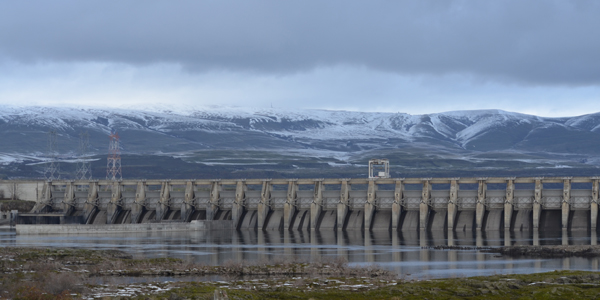By Robert Mullin
Portland General Electric (PGE) and the Bonneville Power Administration said Wednesday they have signed two agreements that will help PGE avert a generation shortage after it shuts down its coal-fired Boardman Generating Station in 2020.
PGE in 2010 agreed to close the 550-MW Boardman plant to avoid investing the $470 million in pollution controls needed to keep Oregon’s last coal-fired generator running until its original 2040 retirement date. The utility last year halted efforts to build two new gas-fired plants at the Boardman site, saying it was instead pursuing talks to obtain existing resources.
Wednesday’s announcement revealed those resources will be supplied by BPA, which will sell the Oregon utility up to 200 MW of surplus hydropower from the Federal Columbia River Power System under two concurrent five-year power purchase agreements for two different energy products, starting in January 2021. BPA told RTO Insider it could divulge only limited details about the contracts because they are subject to a non-disclosure agreement.
“That said, we can say that the two products are an advance notice right to power, each with different notification timeframes,” BPA spokesman David Wilson said. “Each product also carries asset-controlling supplier status,” which allows the associated energy to be exported to California with a low emissions factor for the purpose of greenhouse gas reporting under that state’s cap-and-trade program.
BPA said there were benefits to both parties in the deal, with PGE gaining access to fast-ramping resources while the federal power marketing agency pursues one plank of its recently announced strategic plan, which includes the marketing of “competitive products and services.”
“In addition to allowing BPA to take advantage of a new opportunity to market its clean, flexible hydropower and generate direct revenue as part of a broadening portfolio of power products, the contracts allow PGE more time for new dispatchable resource technologies to mature to help the company integrate increasing amounts of renewable power onto its system,” BPA said.
“These agreements are a great opportunity for us to collaborate with BPA to achieve shared goals in the region,” said PGE CEO Maria Pope.
The deal also has found support among key ratepayer and environmental advocates in the region.
“This is a great deal for the region. It’s a value-added product for the federal power system and a good alternative for PGE. It puts off big new investments in gas that would have locked PGE and its customers into fossil fuels for decades,” said Bob Jenks, executive director of the Oregon Citizens’ Utility Board.
“Instead of building new carbon-emitting resources, PGE is able to take advantage of existing clean hydropower, and BPA is able to lock in a future sale to help strengthen its financial health,” said Wendy Gerlitz, policy director with the NW Energy Coalition.
The power that PGE acquires under the BPA contracts will not count toward Oregon’s 50%-by-2040 renewable portfolio standard, which bars facilities that began operating before 1995. But it will contribute to the utility’s efforts to meet an Oregon requirement to reduce emissions to 80% below 1990 levels by 2050.
PGE earlier this month circulated a draft request for proposals seeking 100 MW of renewable power to help meet both those mandates. The utility expects to bring those resources into its portfolio by 2021.
The utility last October joined Western Energy Imbalance Market (EIM), drawing $2.8 million in net benefits during its first three months of participation, according to CAISO.




